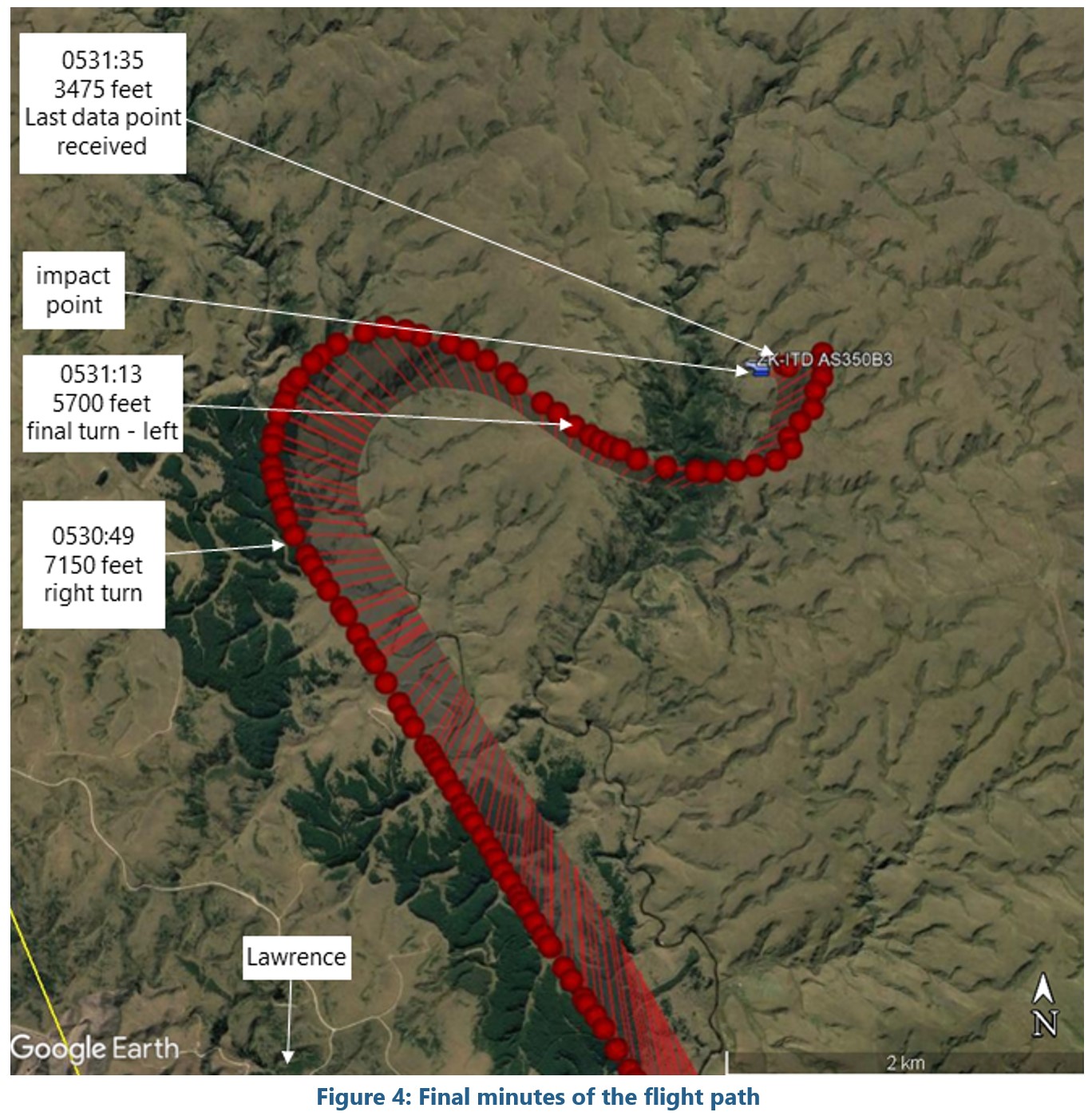
The fatal crash of an AS350 ‘Squirrel’ helicopter in the Lammerlaw Range northwest of Dunedin was very likely due to the pilot becoming disoriented in darkness and cloud, combined with being out of practice in instrument skills, says the Transport Accident Investigation Commission.
The Commission (TAIC) issued its final report on the 16 September 2021 accident today.
TAIC’s Chief Investigator of Accidents Naveen Kozhuppakalam says the Commission is calling on the Civil Aviation Authority to resolve safety issues around ambiguity of night Visual Flight Rules (night VFR) and guidance.
“The rules are meant to keep pilots to within 25 nautical miles of the point of departure; but the Commission found that aviators, operators and instructors are able to interpret the words to allow pilots to fly at night from one 25-mile zone to the next and so on across country.
“This is much further than intended; it puts pilots at risk of encountering night flying conditions outside their capabilities. That’s very likely what happened in this accident.”
“Another anomaly is that while complex skills like flying with only instruments require regular practice, CAA’s current rules and guidance don’t require night VFR pilots practice regularly.
“This is a safety issue because if a pilot loses sight of important visual references – like on a dark night in thickening cloud, without a clearly defined horizon – then there’s more risk they’ll be unable to switch to relying solely on instruments and they’ll be vulnerable to disorientation and losing control of the aircraft. That’s very likely what happened in this accident.”
The pilot, an experienced aviator trained in and qualified for restricted night flying, was flying the helicopter at night from Milton to Alexandra to conduct frost protection over an orchard. Flight data showed that the helicopter was over the Lammerlaw Range when it made a tight descending right-hand turn then a left-hand spiral dive that ended in a near vertical nose-down high-speed impact with the ground. The sole-occupant pilot did not survive.
“The helicopter took off well before sunrise, and with no moon, it was the darkest part of the night. The pilot almost certainly encountered increasing cloud and very likely lost their clearly defined horizon.
“In this situation, ideally, a pilot immediately switches to instrument flight to maintain situational awareness and control of the aircraft. But in this case, although the pilot was current for restricted night flying, it was nine years since they last logged instrument flying practice. So it’s very unlikely the pilot was proficient in flying with sole reference to instruments.
The flight data revealed a high angle of bank turn and rapid descent that was consistent with spatial disorientation and loss of control of the helicopter.
